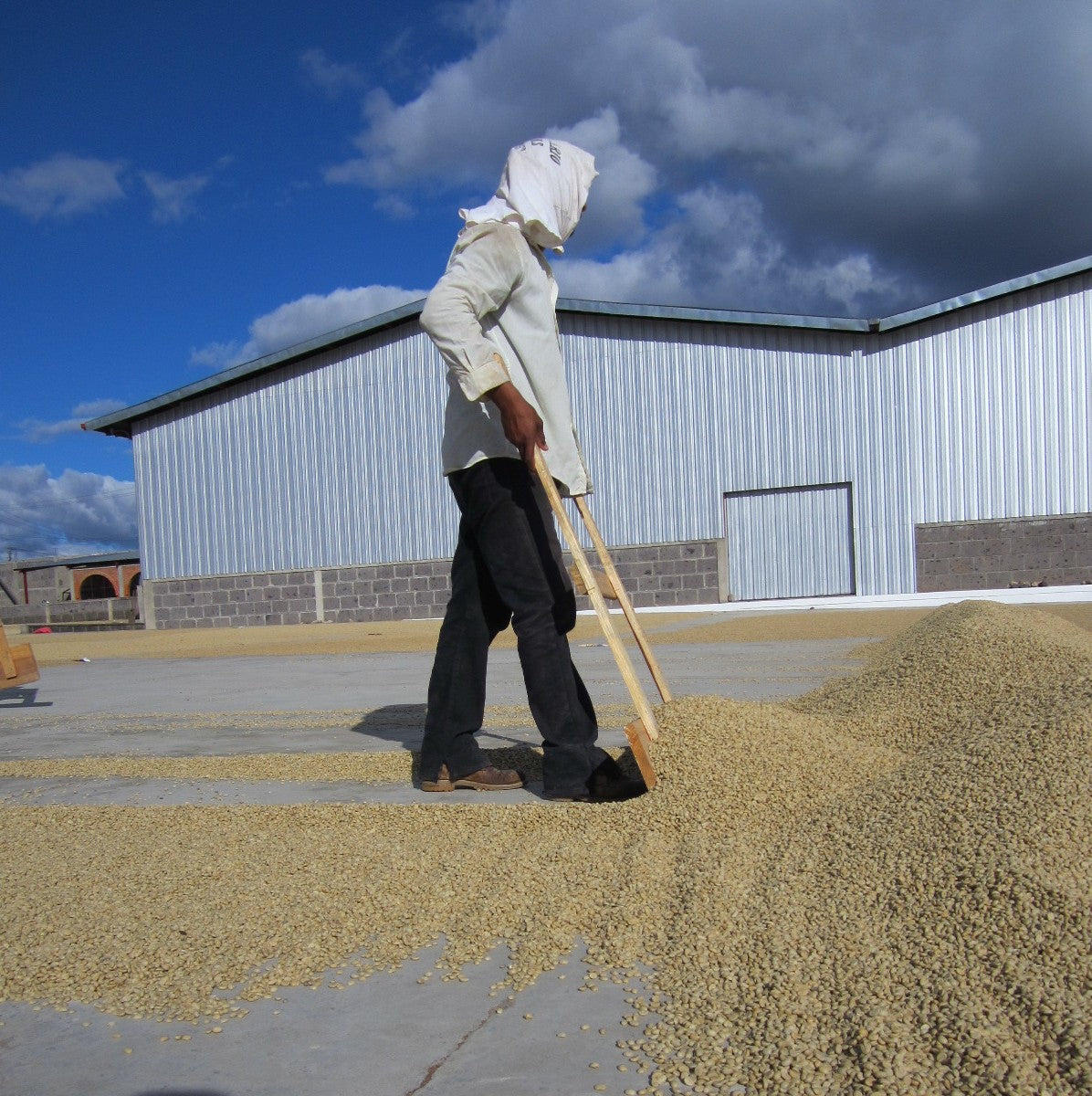What is Wet Process Coffee?
Specialty coffee is processed using varous methods from origin to origin. By "processed" we mean, the pit (bean) of the cherry is extracted from the pulp, dried and prepared for exportation and artisan roasting. Below we explain the wet process method in simple terms, using photos from our time spent on Luis Alberto Balladares' farm in Nicaragua.
The method is called wet process because water is the primary means to both moving the coffee through the process and to making the extraction of the seed possible. Since processing method affects taste, understanding these things is important if we are to fully understand why certain coffees taste the way they do.
1. The coffee grows on a shrub. The shrub does not get harvested usually for the first 3 years of growth, and may last 15-20 years before having to be replanted. When the berries turn red (well, a few varieties turn yellow, but usually red) then they are ripe to pick. These must be harvested by hand so as not to break open the coffee cherry. Once it is broken open, it starts to ferment and will be no good for high quality specialty coffee. Coffee can only grow at very high altitudes. It is impossible to grow it in the United States.
2. The coffee must then be poured into a huge vat. From this vat it will be shaken and washed through a screen to divide up the larger ripe fruit, from the less desirable smaller berries. The lesser quality berries will be sold as a lower quality coffee.
3. After being separated, the coffee will go into a de-pulper. The pulp is the red part of the cherry. This is removed and kept for compost/fertilizer. It shows the depulper spinning in the picture on the left, and dumping the refuse into a pile on the left. If the pulp does not come off in this step, then it is not completely ripe and is hand sorted out and used in the lesser quality coffee. Yes, that's right...hand sorted out. All the coffee in the world.
4. The coffee dumps out from the de pulper into large vats where it ferments for a while. The vat is then filled with water and forced out into a long drainage half pipe. This pipe is filled with water, and the workers stir the coffee around. The particles of shell around the coffee pit, or pieces of pulp rise to the top and are siphoned off.
5. The coffee is sorted several times if it is specialty coffee to look for any defects. If it is grown at a lower altitude, there are also coffee beans that are ruined because of a little worm that digs into and look how tiny this worm is! Can you see the tiny white thing in his hand?
6. The coffee has to be dried for several days to lower the moisture content to 12%. It is laid out on huge cement areas for 7-8 days where it is turned and raked 7 times a day. Hopefully it does not rain during this time or it causes problems!
7. When the coffee is dry enough, the coffee has to be taken out of what is called the parchment. The coffee bean has been shrinking as the moisture is dried out, so the parchment pulls away from it. Here you can see a green coffee bean and the parchment on the right. There are usually two beans inside each cherry.
8. Don't forget, the coffee has not been shipped, or roasted yet! As you can see, it takes a LOT of people a LOT of work to get your coffee to your doorstep!













